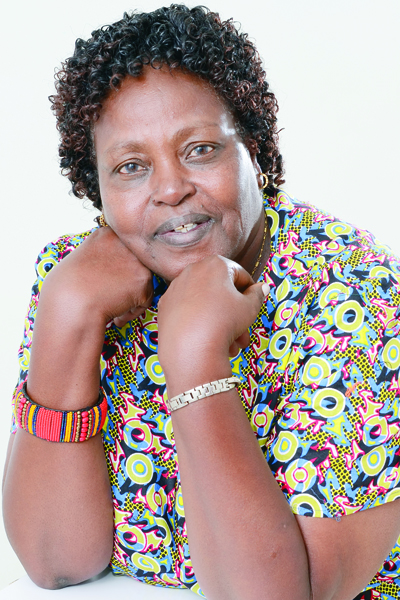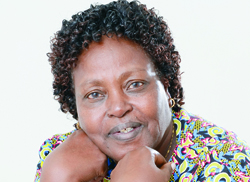
Being ostracised by her deeply cultural Maasai community did not deter Priscilla Nangurai from her quest to rescue child brides from the jaws of early marriage. She helped establish the AIC Girls Rescue Centre in Kajiado County, which provides a safe haven for runaway child-brides, and has been instrumental in the rescuing of more than 1,000 girls from possible marriage. In recognition of her relentless struggle, she is a two-time recipient of the Order of the Grand Warrior (OGW) among other awards.
Priscilla Nangurai was only six when her 16-year-old sister was married off. Born and raised in Kajiado County, the sisters lived the realities of many rural girls, defined by basic survival and limited opportunities.
Words of Wisdom
• “Whatever you do, don’t do it for a reward because human beings don’t remember. Do it for God.”
• “Picking the good from criticism builds you and makes you a better and more effective person.”
The sixth of five girls and three boys, Nangurai was born in November 1948. Work kept their forest ranger father away from home most of the time. Her earliest memory of him was when, as a six-year-old at Oloolua Primary School in Kajiado, she found her eldest sister, Nairesiai, crying.
The teenage student of the then African Girls’ High School – today Alliance Girls High School – was supposed to be going back to school that day. She was in Form Two.
While her mother was keen to educate all her children, Nangurai remembers their father telling her sister: “You’re not going to school now; you’re going to get married.” And just like that, Nairesiai became a wife.
But she did promise her younger sister what she herself had been denied. Although Nangurai didn’t understand what that meant, her brother-in-law proved to be a progressive man who ensured that the sisters received an education. Nangurai moved to Ilbissil Primary School.
When she qualified to join Alliance Girls High School, her brother-in-law looked for a bursary for her. “I really thank God for my brother-in-law,” she says. “Two of my elder brothers, who were working at the time, also helped me, providing books and personal effects.”
But her education was threatened in Form Three. “My father said I should go home as he had found a suitor for me.” However, her sister and the school principal fought to keep her in school. “I remember living with my teacher, Mrs Okumu, one holiday,” she recalls.
She later joined Kenyatta College – today’s Kenyatta University – in 1966 to train as a teacher. On completing her training in 1968, Nangurai, aged 20, was posted to the mixed Olkejuado High School, where most of the male students were older than her. They had returned to school after undergoing the rite of passage to become morans, which sometimes took as long as five years.
“They would really harass us. Whenever we reported their bullying to the principal, the boys retorted that they were our age mates and were therefore entitled to play around with us,” she says.
In the 1980s, there was a national push to separate boys from girls in the belief that this would improve academic performance. But the idea of phasing girls out worried her.
“I wondered where these girls would go,” she says. She knew she had to fight for them but she had no idea how. “I was told I was too young and that this was a man’s battle.”
In 1982, the African Inland Church (AIC) missionaries offered Nangurai the position of AIC Girls Boarding Primary School principal. She welcomed the opportunity, although moving from secondary to primary school proved tougher than she thought.
As she settled down, bigger worries emerged. The school was doing badly academically.
Out of 80 primary schools in Kajiado, her school was trailing in position 72. There was a lot of blame targeting teachers, who were accused of incompetence. For three years, Nangurai and a handful of teachers investigated the cause of the school’s dismal performance.
Female circumcision, which led to early marriage and teenage pregnancies, proved to be a major problem. Many of the girls were withdrawn from school to get married. She watched helplessly. “I didn’t do anything,” she says.
An incident in 1986 provided the perfect opportunity for action. One student, Naramat, had left school on a Thursday to go home for the holidays. At home, she walked into a party – unknown to her, the elderly men had arrived for a three-day celebration that would end with her marriage on Saturday.
An altercation with her mother ensued, after which the girl fled to the nearby Catholic mission. She left two notes with the nuns for the District Commissioner and her principal. One letter read: “My headmistress, my parents are giving me away on Saturday. I do not want to get married, I want to continue my education. I would like to be a nurse. Please rescue me, Naramat.”
Although Nangurai received the note after the wedding, she dashed off to see the DC, Harry Wamubeyi, who together with the local chief, embarked on a rescue mission.
“News in Maasailand travels like bushfire,” says Nangurai. The entire village got wind of the impending raid. The chief was in a dilemma. “He’s a government official, but he also needs to toe the community line.”
The chief told the DC as much. The community lived on the Kenya-Tanzania border, so the newly-weds crossed over to Tanzania to hide, but the DC pursued them. The girl was found and taken back to school. “The marriage had not yet been consummated, thank God,” says Nangurai.
Parents from both sides and the groom were arrested and locked up for two days. “The DC wanted to teach them and the community a lesson,” she says, but it was not over for Naramat. Upon release, her family demanded to have her returned to her husband.
“We were in trouble. My family had to have 24-hour security for three years,” says Nangurai, who was virtually ostracised by the community and also suffered verbal abuse.
The 2002 winner of the Guinness Stout Effort Award is sure that were it not for Naramat, whom she calls “my eye-opener”, she might not have mustered the courage to confront child marriage.
With time, the number of long-term guests in the Nangurai household increased. By 1987, she had four girls living with her three children. “Then it was six, then eight.” By 1990, they were sheltering 45 girls, who could not go home even for Christmas. Thankfully, her family fully supported her mission. “We never had time for ourselves, but they understood.”
Government support enabled Nangurai to scale up her efforts. She enlisted the support of a group of volunteer women community scouts, who unearthed child brides or girls at risk of marriage and in need of refuge and support. It was a slow start that hinged on the girls’ co-operation.
In 1992, a Women in Development conference was held in Kajiado, which resulted in divisional committees of six women per division. They mounted a campaign to rope more parents into the boarding school idea to enhance their daughters’ chances of completing their primary school education. During the holidays, they invited parents to stay in the boarding blocks for three days to be assured of their daughters’ safety.
“Enrolment rose from 200 to more than 600,” she recalls with pride. The committees conducted inter-school talks through workshops, clubs such as Tuseme (Speak out), and guidance and counselling sessions.
Concerned mothers and women created a fund for donations to buy the rescued girls’ personal effects and food during school holidays. Thirty-five former students of Olkejuado High School provided a total of Ksh35,000 every quarter, motivating Nangurai to soldier on.
However, the women lobby groups’ zeal waned owing to constant scorn from the community. Others felt they could no longer keep secret their rescue mission work. “You cannot leave home without your husband knowing,” says Nangurai, who also faced a funding shortage.
The Forum for African Women Educationalists (FAWE) stepped in with “tremendous support” in 1993, the year it was established. It was through FAWE that she built the famous AIC Girls Rescue Centre in Kajiado, which houses 60 girls, at a cost of Ksh2.2 million.
She also founded the Humanitarian Efforts for Learning of the Girl-child in Africa (HELGA) organisation and Nanana (Naisula Naserian Nabulu) Rescue Centre in 2005 after retiring from AIC Girls.
Nangurai credits FAWE and its co-founder and former executive director, Eddah Gachukia, with her success. “She gave me a lot of exposure and trained all the AIC Girls teachers,” She says. Dr Gachukia also accompanied Nangurai, travelling the world to share the challenges faced by marginalised schoolgirls.
In 1994, she attended a FAWE consultation in Mauritius, where Africa’s Education ministers discussed the Re-entry Policy seeking to allow girls who become pregnant to return to school post-delivery. She addressed the topic at the 1995 UN conference on women in Beijing, China.
When FAWE awarded four centres of excellence for girls’ education across Africa in 1996, AIC Girls was among them. The recognition exposed Kajiado teachers to best practices to improve girls’ education, and the centre’s parents and the community saw the need to educate girls.
During a workshop with chiefs in the area, they resolved not to allow schoolgirls to be married off. After a lifetime of rescuing girls exposed to emotional, physical and psychological trauma, Nangurai has a passion for counselling and wants it included in the teachers’ training curriculum.
In 2015, The AIC Girls Boarding Primary School announced its partnership with HELGA. The institution provides students with counseling, personal care items, food during and between school terms, and education on human rights (with an emphasis on children’s rights).
Nangurai, a two-time winner of the presidential Order of the Grand Warrior of Kenya (2004 and 2013), was part of the team that established the Starehe Girls Centre in 2005. Her various awards include the 2007 YWCA Award for determination in encouraging girls’ education.
